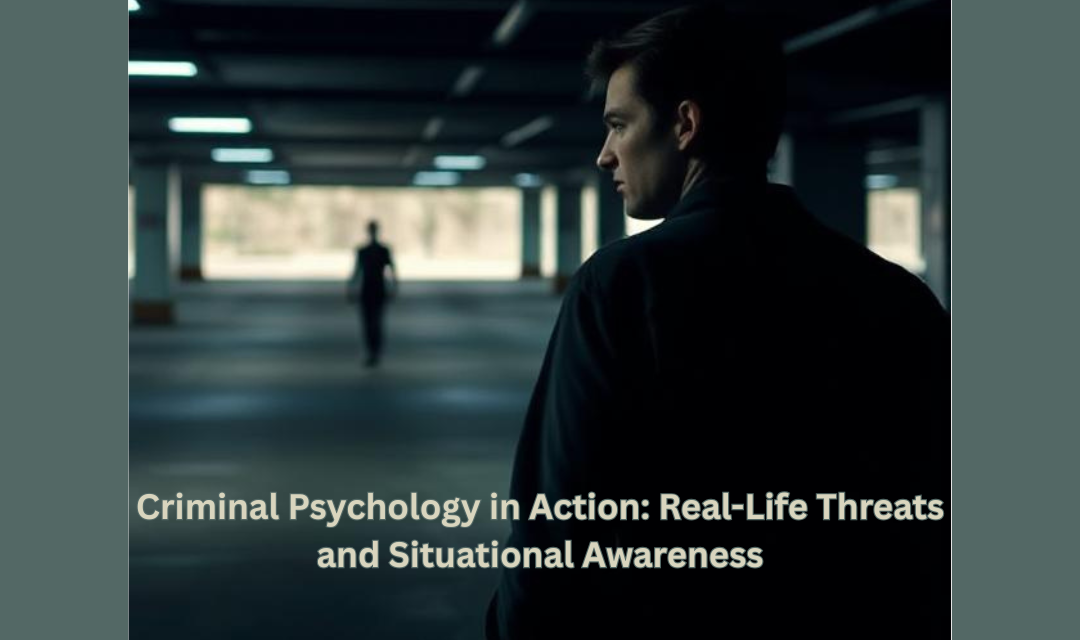

Understanding criminal psychology is all about recognizing patterns, methods, and motives to better protect ourselves. In “It CAN Happen to You! Don’t Be A Victim,” author James E. Hawkins takes readers into the world of criminals, how they think, and why certain people become targets. His experience in the U.S. Navy and tactical security lends authenticity and urgency to this one-of-a-kind book. This is a hands-on look into the psychology behind criminal behavior.
Criminal psychology books often fall into two categories: academic texts and real-world survival guides. Hawkins’ book fits in the latter but stands out due to its depth. He connects everyday crime scenarios, like thefts in parking lots or stalking at shopping centers, with behavioral red flags and situational cues.
A key theme is situational awareness. The author stresses the importance of listening to your “gut feeling,” a psychological defense mechanism rooted in intuition. The book explains how the human brain combines logic and emotion when assessing danger, something criminals understand and exploit. Whether it’s pickpockets watching for distraction or carjackers identifying easy targets, Hawkins exposes the mental games played before a crime occurs.
So what’s the solution? Simple. Never drop your guard. This applies to all situations, regardless of where you are. Through dozens of practical examples, the book breaks down how criminals choose their victims, often based on vulnerability and lack of awareness.
While many of the best books about criminology are research-heavy, few translate theory into practice like Hawkins’ book does. His writing is clear, straightforward, and filled with relatable examples. He doesn’t dwell on statistics, though some are used to show just how common violent crimes can be. Instead, he focuses on behavior, both the predator’s and the potential victim’s. Rather than just warning you about unsafe neighborhoods, Hawkins explains how specific businesses (like jewelry stores, liquor shops, or convenience stores) attract different types of criminals. He also details how professional pickpockets and purse snatchers operate, including their preference for certain purse types and distraction techniques. These real-life criminology insights teach readers how criminals think, plan, and execute thefts, often within seconds.
If you’re looking for criminology books for beginners, Hawkins’ work is a solid choice. It’s not written with technical jargon or complex theories. Instead, it’s a personal guide, motivated by the author’s desire to protect his family and help others do the same. He shares stories, some his own, others observed, where instinct and preparation made the difference between safety and danger.
One striking part of the book discusses parking lots and garages. These are areas people use daily but rarely associate with danger. Hawkins explains how criminals exploit routine behavior and uses these locations as recurring examples to reinforce his key points. His approach teaches readers that everyday vigilance is about preparation.
Throughout the book, the tone remains empowering. The author isn’t trying to scare readers. Instead, he wants them to become confident and proactive. He suggests small daily habits, like choosing parking spots wisely or scanning a convenience store lot before entering. These habits, once developed, can dramatically reduce the chances of becoming a victim.
“It CAN Happen to You! Don’t Be A Victim” explains how criminals look for signs of distraction or weakness, such as texting while walking, leaving purses unattended, or being absorbed in phone calls. These behaviors signal to a predator that the person is unaware, and thus, an easy target.
Hawkins also addresses stereotypes and misconceptions. The author warns against judging people by their appearance. Criminals come in all forms, and sometimes, the threat isn’t from someone you’d expect. By shedding assumptions, you gain clarity and better judgment, crucial elements in preventing crimes before they happen.
What sets “It CAN Happen to You! Don’t Be A Victim,” apart from many criminal psychology books is its focus on prevention through awareness. The book turns criminology into a personal toolkit for safety. It empowers readers to trust their instincts, evaluate situations wisely, and act decisively. James E. Hawkins offers more than anecdotes; he provides strategies. He wants readers to live their lives fully; shopping, traveling, working, without living in fear. But he also wants them to understand that criminals exploit routines, distractions, and assumptions. If you’re starting to explore criminal psychology or searching for practical criminology books for beginners, this one is a must-read. It bridges the gap between criminological theory and real-life action, making it both insightful and useful. In a world where threats are unpredictable, being aware and prepared is the best defense.